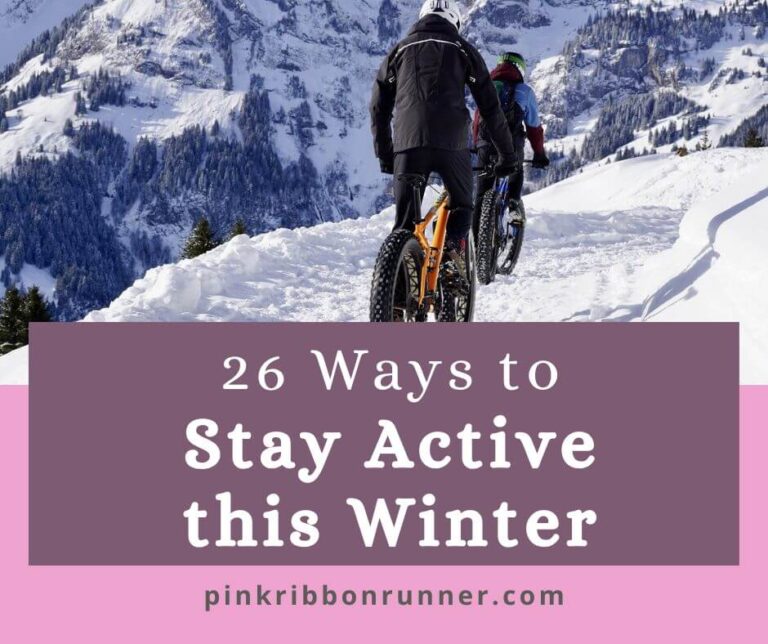Winter Hiking Tips: How to Not Freeze
Winter hiking can be cold and challenging, but it is also surprisingly rewarding. It’s an experience unlike any other, with amazing things you might not see during other seasons. And while most people think that hiking in winter is too difficult or dangerous for beginners, there are ways to make it safe and enjoyable. It is possible to be comfortable and safe on your winter hike with these tips.
This post contains affiliate links. As an Amazon Associate, I earn from qualifying purchases.
Hiking is a great form of exercise in the winter and can help you stay active and healthy during the cold months. It’s a wonderful way to get outside and enjoy the fresh air, awesome views, and scenic landscapes. And the frozen wilderness can make for some spectacular scenery.

What are the Benefits of Winter Hiking?
Hiking in winter allows you to enjoy the beauty of nature that the season brings, but you are also able to enjoy other benefits. Winter hiking is a great cardio workout. It helps you stay in shape and reduces weight while strengthening your muscles and bones. It also helps with your heart health by reducing stress hormones, which are known for causing high blood pressure.
Other advantages include the release of mood-enhancing hormones, increased breathing capacity, improved brain function, better balance and improved mental health. A hike in winter might just make you stronger and happy!
How Do You Start Winter Hiking?
The important thing to do before going on a hike in cold weather is to plan the hike well. Know where you are going and the type of terrain you might encounter. Check the weather report before going out so that you have an idea of what to expect. Make sure you have good quality hiking clothes to stay warm and dry. Always pack appropriate gear for your adventure. And don’t forget to bring a camera so you can capture all your memories from this amazing endeavor!
Once planned and packed, go for your hike!

Is It Safe to Hike in Winter’s Cold Weather?
For the average person wearing appropriate winter gear, it is safe to hike in milder winter temperatures. It is not safe to hike in extreme cold temperatures, as frost bite and hypothermia are a higher risk. Be aware of the wind chill, as wind can make even mild temperatures dangerous.
What Temperature is Too Cold for Hiking?
The answer to what temperature it too cold for hiking is most often a personal preference. People experience cold differently. Temperatures that feel cold to some, may feel colder to others. And if there is illness involved, you may be more susceptible to the detrimental effects of winter weather, such as frost bite or hypothermia.
According to Health Canada, your risk of these detrimental health effects increase when the wind chill is below -16°F (-27°C) for the average person.
If you have recently been through cancer treatments, or have side-effects such as lymphedema, circulation problems or neuropathy, then be sure to check with your doctor to make sure winter hiking is safe for you.
Winter Hiking Safety Tips:
- Plan your route ahead. It is best to know the terrain, as steep icy hills can turn a nice hike into a nightmare of sprains or broken bones. Pack for the terrain and weather conditions.
- Check for avalanche conditions if you are hiking in avalanche territory on either avalanche.ca (Canada) or avalanch.org (USA).
- Hike with a Buddy. Not only is it more fun to hike with a friend, it is safer too. A buddy can keep an eye out for signs of hypothermia. And they can go get help if needed.
- Tell someone where you are going. Even if you are with a buddy, tell someone, not on the hike, where you are going and what time you are expected to return. It is possible for both you and your buddy to get lost or run into trouble out there.
- Wear bright color clothing. Bright color clothing helps you stand out from the surrounding landscape and makes you more easily spotted by emergency rescue personnel.
- Stay hydrated. Dehydration can set in quickly and cause early exhaustion and possibly even disorientation. Bring water with you, even if it is a short hike.
- Snack often. You will burn more calories walking on snowy trails. Be sure to pack foods that are easy to eat even when frozen, like nuts, chews, dried fruit, gummies, and chocolate.
- Watch the weather. Check the forecast just before you leave for your hike. Weather can change quickly, so keep your eyes on what is happening in the sky during your hike.
- Watch for signs of hypothermia. This is when your core body temperature drops below 95°F (35°C). At first, you may be shivering, have pale or cold skin, and lack judgement or feel disoriented. You may not care that you are cold. Therefore, hiking with a buddy is important. This condition can progress to a lack of shivering, slow pulse, weakness, confusion, and shallow breathing. It can lead to unconsciousness and death quickly, so if earlier signs of hypothermia are spotted, prompt action is needed to warm you up.
- Don’t walk on thin ice. Avoid walking across frozen bodies of water, as often there are thin spots you could fall through. Hypothermia sets in faster when you are submerged in water.

What Do You Need For Winter Hiking?
Your gear is very important for hiking in winter. Without warm and dry clothing and supplies, you will definitely freeze. So, be sure to pay careful attention to the next sections on what to take winter hiking.
What Do You Wear Hiking in Winter?
Dressing in layers is ideal. You can take off top layers if you feel hot, or you can put top layers on if you are feeling cold. Try to avoid getting too sweaty, as this will make you cold and miserable for the hike back.
Do not wear cotton clothing, including your underwear, as it holds moisture. Look for wicking fabrics in anything that touches your body, at minimum. Wearing wicking clothing in all layers is ideal. Some fabrics that wick moisture are synthetic materials, such as polyester or nylon, bamboo or merino wool.
Some items of clothing are best if they are waterproof. Boots, shoes and possibly the outer top and bottom layers can be made of water-resistant or waterproof fabrics. These may include Gore-Tex, oilcloth, wool, fleece, waxed cotton and some synthetic fabrics.
Should You Wear Hiking Boots or Shoes?
Whether you get hiking boots or hiking shoes depends on personal preference and the terrain you will be hiking in. The difference between hiking boots and hiking shoes is that the former are tall and sturdy while the latter are light and flexible. Hiking boots provide ankle support and are better at keeping snow out, but they are heavier than hiking shoes, so they can be tiring to wear.

Merrell Hiking Boot
More protection from snow and sturdier with more ankle support

Merrell Hiking Shoe
More flexible and lighter weight so less tiring
What are the Best Winter Hiking Clothes?
The best winter hiking clothes are what you feel the most comfortable in. It is ideal to wear lightweight, loose-fitting layers, including a base layer, an insulating layer and a wind or water resistant layer.
Your base layer should be wicking so it can keep moisture off your skin. It is also essential to have a wind-resistant layer on top so that your skin is protected from the wind. You may want an insulating layer if it is very cold outside. However, don’t bulk up your legs too much because they won’t be flexible when you are trying to move around on your hike.
When you purchase your winter hiking clothes, keep the layering and loose fitting in mind when you choose your sizes. You may want to size up on your outer layer to allow the other layers to fit comfortably underneath. If your clothes are too tight, you won’t be comfortable. Any compression will reduce your circulation actually making you colder.
My Picks for Base Layer for Winter Hiking:

Under Armour Cold Gear Infrared
Base Layer T-Shirt

Under Armour Cold Gear Infrared
Base Layer Leggings
My Picks for Middle Insulating Layer for Winter Hiking:

For Milder Winter Weather
Baleaf Thermal Half-Zip

For Colder Winter Weather
Columbia Powder Lite Jacket
My Picks for Outer Wind Layer for Winter Hiking:

For Warmer Winter Weather
Baleaf Lightweight Wind Breaker

For Colder Winter Weather
Arc’teryx Atom Lightweight Jacket

Baleaf Wind and Weather Hiking Pant
What is the Best Winter Hiking Head Gear?
Wear a warm hat, one that wicks sweat and is warm enough for the winter conditions. Make sure it covers your ears to protect them from wind damage and frostbite. A brim is nice for keeping eyes clear of snow and wind. I also like to ensure my forehead is covered, as I get headaches if this area gets cold.
Wear a buff or neck tube to keep the wind and cold off your neck. You can also use this to pull over your mouth, nose and cheeks to keep them warmer during your winter hike.

My Favorite Winter Hiking Hat
TrailHeads Fleece Ponytail Hat with Brim and Ear Warmers
What is the Best Winter Hiking Hand Gear?
You can layer what you wear on your hands too. The base layer is usually thinner and less bulky than the top layer. Lightweight gloves or mitts are great for the base layer. The second top layer is a water-resistant or water-proof mitt that protects your hands from wind and wet snow. The insulation that surrounds the fingers and palm should be just the right thickness to provide warmth while still being able to move.

Trailheads Convertible Waterproof Gloves
Do You Need Snowshoes for Winter Hiking?
No, you don’t need snowshoes for winter hiking if trails have packed snow. So, if you are hiking well used, popular trails, you don’t need snowshoes. Even in deeper snow, you don’t need snowshoes. You can use gaiters with your hiking boots to keep snow out of your boots and your socks dry. However, snowshoes are a fun way to exercise. They are useful in deeper, less packed snow. So, you may want to try it.

What Other Winter Hiking Gear Do You Need?
You may want to consider wearing or bringing the following:
- Hiking poles to stabilize yourself on rutted ice and snow.
- Crampons or microspikes to slip over your shoes for traversing icy hills. These will help you grip onto the ice surface and help limit the amount of slipping in icy conditions.
- Extra socks in case the ones your are wearing get wet. Wet socks lead to blisters. You don’t want blisters, so keep your feet as dry as you can.
- Hand warmers to activate along the trail. These can also be handy to keep your cell phone or camera batteries warm.
- Small First Aid Kit. You want to be able to treat minor injuries, as the trail may be slippery with ice.
- Whistle in case you encounter wildlife or need to alert emergency crew to your location, should you become lost or injured. A whistle sound carries a longer distance than your voice, especially if you are weakened by the cold temperatures. And it is easy to carry. Just remember to get a plastic one for winter so your tongue doesn’t stick to frozen metal
- Extra winter gloves or mitts to replace wet ones that make you cold.
- Waterproof matches in case you need to make a fire to keep warm in an emergency.
- Flash light in case you can’t make it back before dark.
- A space blanket is handy to pack. You can use it to help keep you warm and dry. It can also make a good emergency shelter.

More Winter Hiking Tips For Your Safety & Comfort:
- Pack gear in a waterproof bag. You can either use a waterproof backpack or pack items in plastic ziploc baggies before putting them in your backpack.
- Your cell phone won’t work for long in winter temperatures. Devices freeze up and the battery drains quickly in the cold weather. Cameras also tend to fog over. Bring extra battery packs for your camera and try to keep the batteries warm with small heat pack handwarmers. Lithium batteries are better in cold weather.
- Keep your cell phone in a plastic ziploc bag to keep it dry.
- Movements in snow will be slower than movements on summer trails. Days are also shorter in the winter. Plan your outing carefully to account for this. You may want to keep your hike to shorter distances than you would in summer.
- Bring a map and know your route. Snow and ice can cover trail markers, landmarks, and cairns that guide your way in the summertime.
- Take water with you, even if your route is short. The extra effort to transverse over snow will have you sweating more and burning more calories. So, also take along some snacks.
- Hiking on a sunny day can help keep you warmer. Sunshine can also help us make vitamin D. But if you are expecting to be out for a longer hike, use sunscreen to lower your risk of skin cancers. You can still get sunburnt when out in the winter sun.
- Keep moving to keep your blood pumping to keep you warmer. Don’t stop for long periods, as you will cool down quickly, especially if your clothes are damp from sweat. Stop only long enough to take a picture.
- Wear sunglasses or ski goggles to keep cold, wind, and sun out of your eyes.
- Sip on your water bottle or hydration tubes often to prevent them from freezing up. You can also buy insulated ones. You can also carry them inside your jacket so that body heat prevents them from freezing.
- Keep your skin covered to prevent frostbite. You an use Vaseline or Glide on the areas of your face that you can’t cover.
- Know how to recognize and provide first aid in case of frostbite or hypothermia.
I hope you have a safe and fun time out hiking the winter trails. It really is a fabulous way to stay active in winter.

photo credits: unless otherwise indicated, images in this post are from depositphotos.com
Be sure to also read my Essential Beginner’s Guide to Hiking for even more hiking tips.










Great tips! Thank you for sharing! I’ve been craving getting out hiking!
I love hiking in the winter and these tips were super helpful! Thank you
I’m in Toronto and I’ve been winter running for three years now and I love it! Beats the heat of summer
Hi there
Im not a hiker but I do love runs in my neighbourhood and also pavement running but I have to admit,winter hiking sounds fun although I’m not sure it`s for me, I hate the cold and wet weather.
Cold weather isn’t for everyone. As long as you stay active, it’s okay to workout indoors too.
Great tips and gear! I live in the desert so I hope to one day be able to do some snow hiking.
Great tips and a very comprehensive article. Especially checking for avalanche conditions part. I am afraid that we all forget about it so often.
Great tips! I love hiking but winter hiking has always seemed out of the question (despite its beauty) but with these tips maybe I can give it a try this year!
Good tips! I’m going hiking next week so good things to keep in mind! Didn’t think about bright clothing but is very important!
Great tips! Wish I could go on a winter hike now! This will be useful once I can travel again on a winter season
Yes, I go hiking in the winter as well! I go on a warm day but I didn’t think to check for avalanche conditions, nor wear bright clothing. Thanks for sharing!!
A superb article for those venturing out and hitting the trails in the winter months. We certainly enjoy our trail hikes with our dog, especially in the winter! We do have good hiking boots and warm waterproof clothes for this time of year.
Great post! 🙂
Great tips! I’ve never gone hiking in very cold weather or snow-covered trails, but it looks like it would be an amazing experience!
Nice blog. definitely some good points to note when thinking about hiking in any condition. Some great clothing suggestions too. 😊
This is definitely very useful advice! I love hiking too! Thanks for sharing!
So many great tips in your post. I love to get ouside as much as possible all year round. It’s so pretty to be outside in freshly fallen snow. Thanks for sharing.